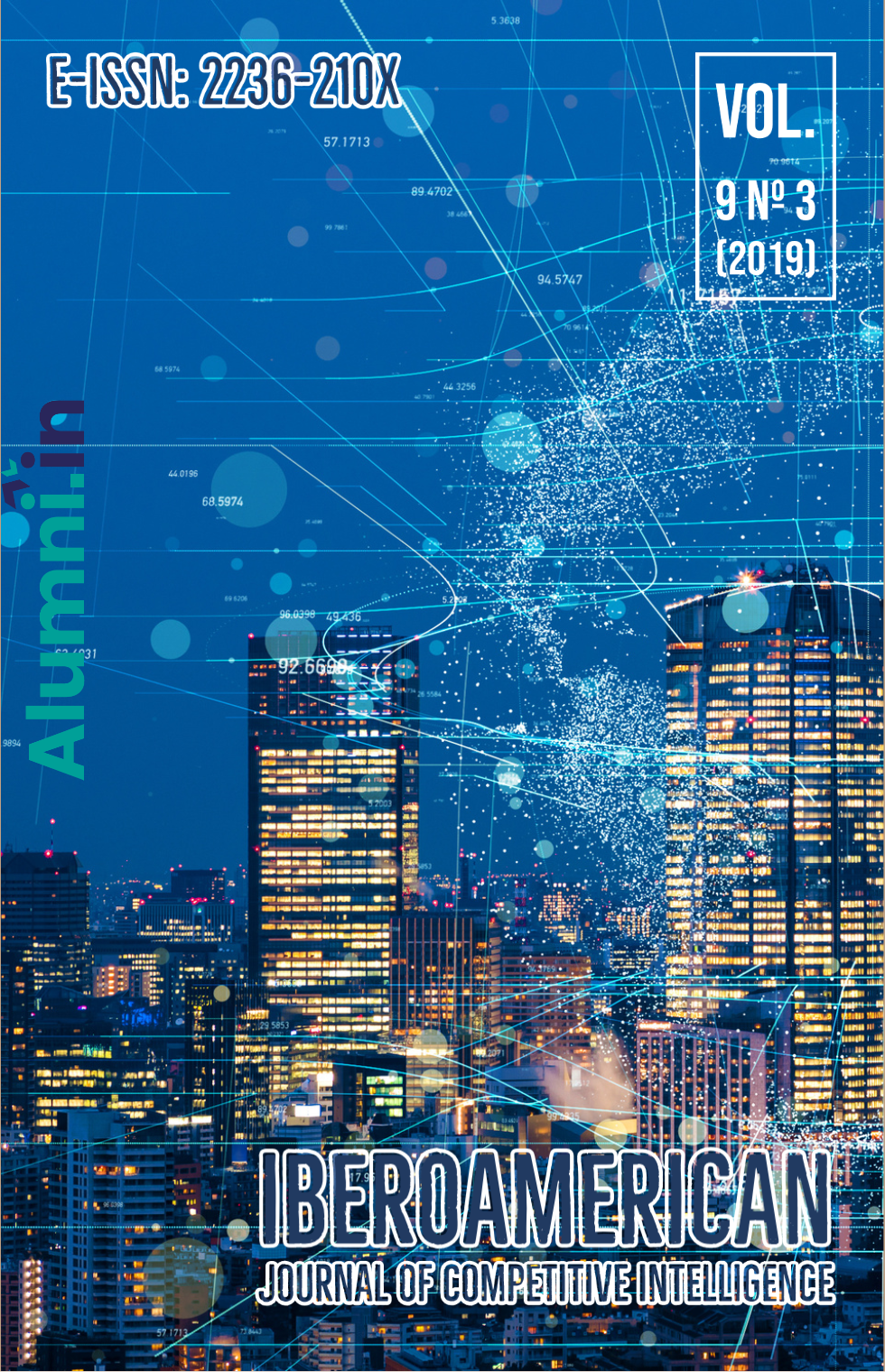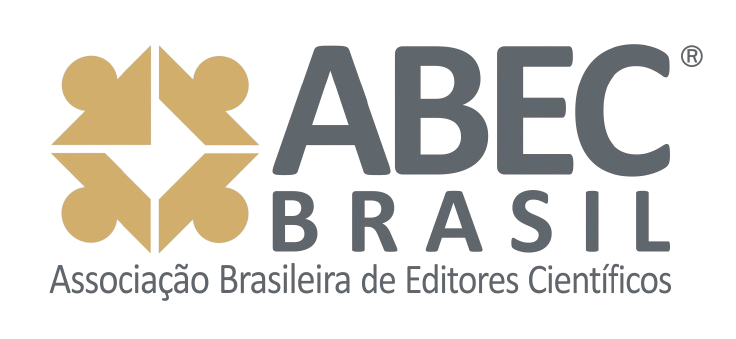INFORMAÇÃO E MODA NA ERA DO BIG DATA: COMO A INFORMAÇÃO DIGITAL INOVOU A MODA E TORNOU A MAIS COMPETITIVA
DOI:
https://doi.org/10.24883/IberoamericanIC.v9i3.335Keywords:
Big Data, Informação, Inteligência Competitiva, Internet, ModaAbstract
Analisa mudanças que ocorreram no campo da moda com a chegada do Big Data, visto que, com a chegada da internet, as informações tornaram-se mais disponíveis, facilitando a coleta de dados. Antes, fontes analógicas tornavam a coleta lenta, agora com a internet, o processo é extremamente rápido, tanto para as empresas quanto para os consumidores, acelerando o ciclo de consumo e demandando dessas empresas uma constante construção de novidades. Com o advento da Web Ubíqua, as bases de dados ganharam um enorme volume informacional e interpretá-las tornou-se novamente uma atividade complexa. Tecnologias como o Big Data passaram a ajudar as empresas do segmento da moda em seus processos de busca e construção de novas tendências. Neste cenário, a presente pesquisa apresenta-se o processo de Inteligência Competitiva como método que pode ser aplicado visando à construção de inteligências para o contexto da moda. Dessa forma, o presente artigo utilizou de pesquisa bibliográfica sobre os temas Big Data e Inteligência Competitiva sob o olhar da Moda, além de levantamento bibliográfico na Base de Dados Referencial de Artigos de Periódicos em Ciência da Informação” (Brapci), com o intuito de chamar atenção para futuras pesquisas que relacionem o uso da informação na moda frente ao Big Data, contribuindo para um cenário pouco explorado pela Ciência da Informação, como é o caso do universo da moda.
Downloads
References
ACHARYA, A et al. Big data, knowledge co-creation and decision making in fashion industry. International Journal of Information Management, v.90, n.42. 2018. Disponível em: < https://www.sciencedirect.com/science/article/pii/S0268401218305024>. Acesso em 2 set. 2019. DOI: https://doi.org/10.1016/j.ijinfomgt.2018.06.008
AKTER, S. et al. How to improve firm performance using big data analytics capability and business strategy alignment? International Journal of Production Economics, v.113, n.182. 2016. Disponível em: < https://www.sciencedirect.com/science/article/pii/S0925527316302110 >. Acesso em 4 set. 2019. DOI: https://doi.org/10.1016/j.ijpe.2016.08.018
BOYD, D.; CRAWFORD, K. Critical questions for big data: Provocations for a cultural, technological, and scholarly phenomenon. Information, Communication and Society, v.5, n.15. 2012. Disponível em: < https://www.tandfonline.com/doi/full/10.1080/1369118X.2012.678878 >. Acesso em 4 set. 2019. DOI: https://doi.org/10.1080/1369118X.2012.678878
BROWN, B.; CHUL, M.; MANYIKA, J. Are you ready for the era of’ big data’? McKinsey Quarterly, v.1, n.4. 2011. Disponível em: < https://sunset.usc.edu/classes/cs510_2013/EPs_2013/EP33_2011_Mckinsey_BigDataEra.pdf >. Acesso em 7 set. 2019.
CHEN, C. L. P; ZHANG, C. Y. Data-intensive applications, challenges, techniques and technologies: A survey on Big Data. Information Sciences, v. 275, n. 1. 2014. Disponível em: <https://www.sciencedirect.com/science/article/pii/S0020025514000346>. Acesso em: 1 jul. 2019.
CHOO, C. W. A Organização do conhecimento: como as organizações usam a informação para criar significado, construir conhecimento e tomar decisões. São Paulo: SENAC, 2003.
COBRA, M. Marketing básico. São Paulo: Atlas, 2007.
DAVIS, M. Semantic Wave 2008 Report: Industry Roadmap to Web 3.0 & Multibillion Dollar Market Opportunities. Executive Summary, 2008. Disponível em: < http://www.eurolibnet.eu/files/REPOSITORY/20090507165103_SemanticWaveReport2008.pdf>. Acesso em 2 dez. 2018.
DAVENPORT, T. H. The human side of Big Data and high-performance analytics. International Institute for Analytics, 2012. Disponível em: < http://www.datascienceassn.org/sites/default/files/Human%20Side%20of%20Big%20Data%20and%20High-Performance%20Analytics.pdf >. Acesso em: 11 set. 2019.
FRINGS, G. S. Moda: do conceito ao consumidor. Trad. Mariana Belloli. Porto Alegre: Bookman, 2012.
GEHRKE, J. Quo vadis, data privacy? Annals of the New York Academy of Sciences, 2012. n. 1, V. 1260. Disponível em: < https://nyaspubs.onlinelibrary.wiley.com/doi/abs/10.1111/j.1749-6632.2012.06630.x>. Acesso em: 11 set. 2019. DOI: https://doi.org/10.1111/j.1749-6632.2012.06630.x
GENTIL, O. B. G. C; CIPINIUK, A. Quem influencia as Influenciadoras Digitais? Comunicação, tendência e moda no Instagram. Moda Palavra, n. 24 , V. 12. 2019. Disponível em: < http://www.revistas.udesc.br/index.php/modapalavra/article/view/11928>. Acesso em 7 jun. 2019. DOI: https://doi.org/10.5965/1982615x12242019007
GIL, A. C. Métodos e técnicas da pesquisa social. 6.ed. São Paulo: Atlas, 2008.
GOBBLE, M.M. Big data: The next big thing in innovation. Research Technology Management., n. 56 , V. 1. 2013. Disponível em: < https://www.tandfonline.com/doi/pdf/10.5437/08956308X5601005?casa_token=4Guyjjk778YAAAAA:kzeVZDYmWicmhh4Wu8HW4FKIAe-WQEomteNM93ok4EtnlvPVWycAxpy19JhwvlGd4-J-xb78jsTd>. Acesso em 7 jun. 2019.
HABER-VEJA, A.; MÁS-BASNUEVO, A. Inteligencia organizacional: conceptos, modelos y metodologias.2013. Encontros Bibli: Revista Eletrônica de Biblioteconomia e Ciência da Informação, Florianópolis, v.18, n.38, 2013. Disponível em: <https://periodicos.ufsc.br/index.php/eb/article/view/1518-2924.2013v18n38p1/25954>. Acesso em: 20 jun. 2016. DOI: https://doi.org/10.5007/1518-2924.2013v18n38p1
LIPOVETSKY, G. O império do efêmero: a moda e seu destino nas sociedades modernas. São Paulo: Companhia das Letras, 2009.
MCAFEE, A.; BRYNJOLFSSON, E. Big data: Big data: The management revolution. Harvard Business Review, n. 90 , V. 10. 2012. Disponível em: < http://tarjomefa.com/wp-content/uploads/2017/04/6539-English-TarjomeFa-1.pdf >. Acesso em 7 set. 2019.
MARQUESONE, R. Big Data: Técnicas e Tecnologias para extração de valor dos dados. Editora Casa do Código. São Paulo, 2016.
MARTINS, T. G. Inovação digital: Planejamento online de táticas e estratégias de marketing digital. Clube dos Autores, Joinville, 2015.
MATTELART, A. História da sociedade da informação. São Paulo: Loyola, 2002.
MILLER, J. P. O milênio da inteligência competitiva. In: miller, J. P. O milênio da inteligência competitiva. Porto Alegre: Bookman, 2002.
MOORE, G. Promoção de moda. Tradução de Edson Furmankiewicz. São Paulo: Editora Gustavo Gili, 2013.
OLIVEIRA, G. Moda e hipermídia. Entretece de linguagens rítmicas. São Paulo: Editora Santarém, 2014.
VALENTIM, M. L. P; et al. Inteligência competitiva em organizações: dado, informação e conhecimento. DataGramaZero, v.3, n.4. 2002. Disponível em: < http://www.brapci.inf.br/index.php/article/view/0000001053/6a50751d6d811772f23ef7de3623bcd2>. Acesso em 7 mar.. 2019.
PRAHALAD, C. K.; RAMASWAMY, V. Co‐creation experiences: The next practice in value creation. Journal of Interactive Marketing, v.18 n.3. 2004. Disponível em: < https://www.sciencedirect.com/science/article/pii/S1094996804701073 >. Acesso em 7 set.. 2019. DOI: https://doi.org/10.1002/dir.20015
SENAI, SEBRAE. Inova moda: tecnologia: contatos: verão. Rio de Janeiro: Edigráfica, 2016.
SINGH, S. K. Role of leadership in knowledge management: A study. Journal of Knowledge Management, v. 12, n.4, 2008. Disponível em: < https://www.emerald.com/insight/content/doi/10.1108/13673270810884219/full/html >. Acesso em 10 set.. 2019. DOI: https://doi.org/10.1108/13673270810884219
VALENTIM, M. L. P; et al. Inteligência competitiva em organizações: dado, informação e conhecimento. DataGramaZero, v.3, n.4. 2002. Disponível em: < http://www.brapci.inf.br/index.php/article/view/0000001053/6a50751d6d811772f23ef7de3623bcd2>. Acesso em 7 mar.. 2019.
VALENTIM. M. L. P (2007). Processo de inteligência competitiva organizacional. // VALENTIM, M. L. P. (Org.). Informação, conhecimento e inteligência organizacional. 2.ed. Marília: FUNDEPE Editora, 2007.
ZAMBON, A. C. et al. Empleo de instrumentos de Gestión del Conocimiento para comprensión de los patrones de preferencia del consumidor en productos de la cadena de la moda. Perspectivas em Gestão & Conhecimento, v. 7, n. Número especial, p. 50–65, 2017. Disponível em: < http://www.brapci.inf.br/index.php/article/view/0000001053/6a50751d6d811772f23ef7de3623bcd2>. Acesso em 7 abr. 2019.
Downloads
Published
How to Cite
Issue
Section
License
Authors who publish with this journal agree to the following terms:
1. Authors who publish in this journal agree to the following terms: the author(s) authorize(s) the publication of the text in the journal;
2. The author(s) ensure(s) that the contribution is original and unpublished and that it is not in the process of evaluation by another journal;
3. The journal is not responsible for the views, ideas and concepts presented in articles, and these are the sole responsibility of the author(s);
4. The publishers reserve the right to make textual adjustments and adapt texts to meet with publication standards.
5. Authors retain copyright and grant the journal the right to first publication, with the work simultaneously licensed under the Creative Commons Atribuição NãoComercial 4.0 internacional, which allows the work to be shared with recognized authorship and initial publication in this journal.
6. Authors are allowed to assume additional contracts separately, for non-exclusive distribution of the version of the work published in this journal (e.g. publish in institutional repository or as a book chapter), with recognition of authorship and initial publication in this journal.
7. Authors are allowed and are encouraged to publish and distribute their work online (e.g. in institutional repositories or on a personal web page) at any point before or during the editorial process, as this can generate positive effects, as well as increase the impact and citations of the published work (see the effect of Free Access) at http://opcit.eprints.org/oacitation-biblio.html
• 8. Authors are able to use ORCID is a system of identification for authors. An ORCID identifier is unique to an individual and acts as a persistent digital identifier to ensure that authors (particularly those with relatively common names) can be distinguished and their work properly attributed.













